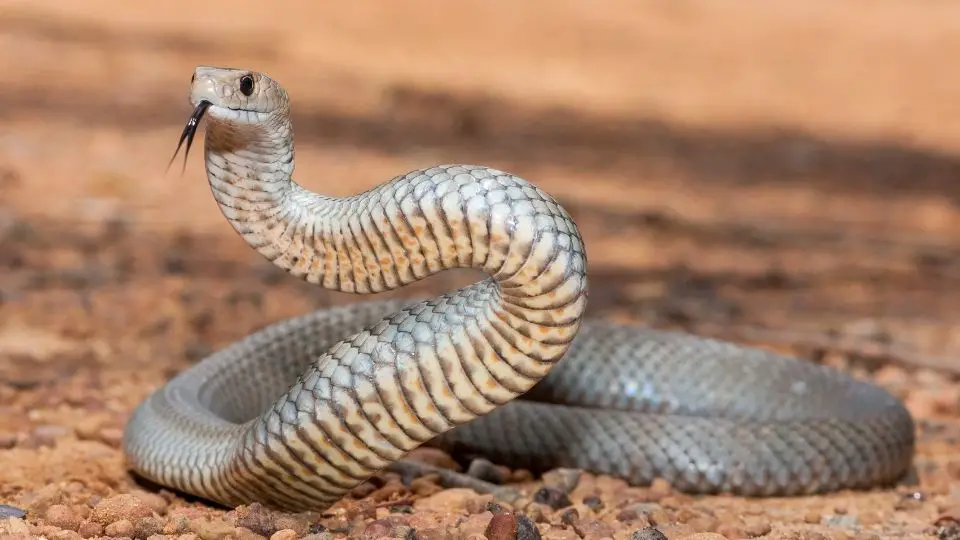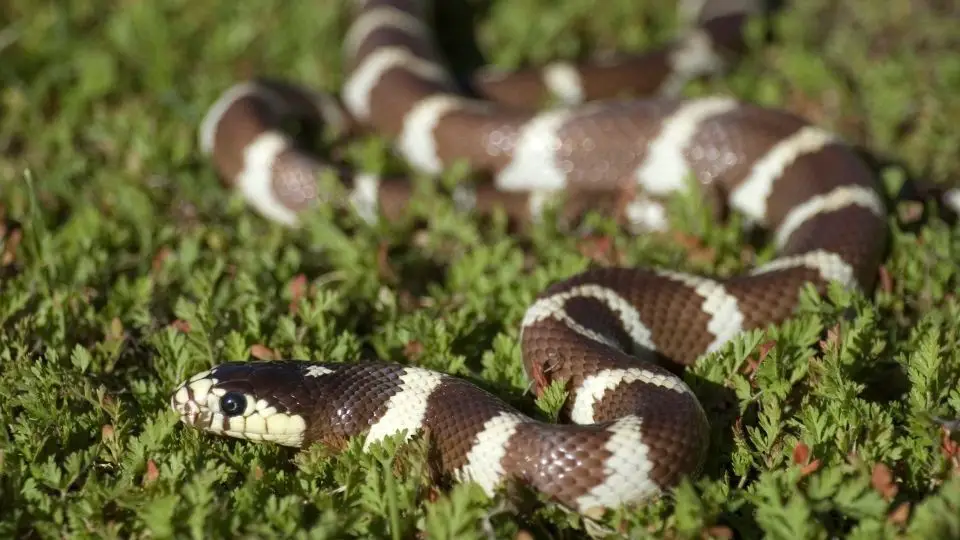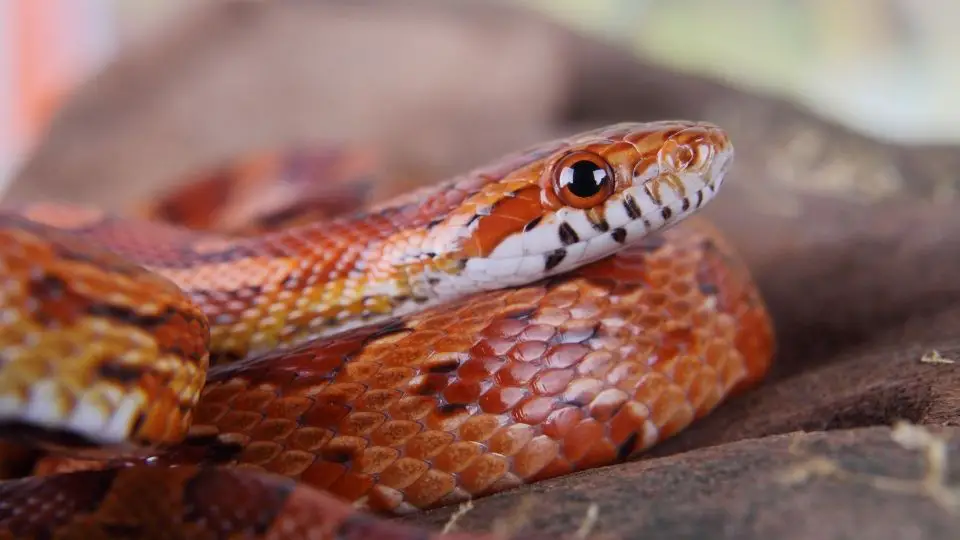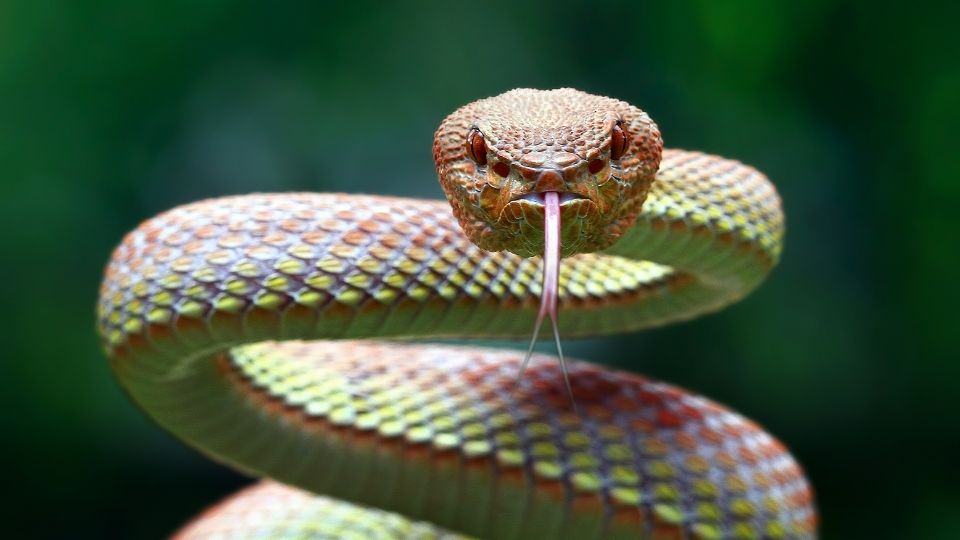The best way to determine if there is a snake in or near your home is to look for indirect signs of a snake's presence, including locating traces of snakeskin, snake droppings, slither tracks, peculiar odors, or hissing sounds.
Have you been noticing signs of snakes in your house? Perhaps you’ve been hearing strange noises coming from your attic or basement, or you’ve detected faint traces of snake skin around your property.
If you suspect that there may be snakes living in or around your house, it’s important to confirm those suspicions as soon as possible.
Of the over 3,000 snake species on the planet, and while the majority are non-venomous snakes, about 200 of them have the potency to kill humans with their venom.
Ready to get rid of snakes? Here are the most common signs of snakes in your house, so you can take the critical, necessary steps to protect yourself, your family, and your home.
Table of Contents
5 Signs of Snakes in Your Home
Do you suspect a slithery presence invading your home? Snakes frequently attempt to stay in remote hiding places away from busy areas, making it harder to spot them than, say, a skunk or raccoon, for example.
Your best bet is to look for indirect signs of a snake’s presence rather than trying to spot them directly. This includes looking for the following:
- Traces of snakeskin: Snakeskin is shed regularly during growth, so you may find small pieces of their old skin near where they reside.
- Snake droppings: Snakes feed off rodents, so you may find droppings around your home containing remnants of bones and hair from these small creatures.
- Slither tracks: In dusty corners of your home like your attic or shed, you may be able to spot snake tracks that look like thin, wavy lines.
- Peculiar odors: If an unusual smell emanates from a particular area of your home, particularly one that wasn’t there before, this could be a sign that a snake is present.
- Hissing sounds: You may hear strange hissing noises from inside your walls and floorboards, where these reptiles could be hiding and calling home.

Where do snakes hide in a house?
Most snakes seek out small spaces with a high abundance of food or pray. In the case of snakes, this means mice and smaller mammals. Both like to settle in dark, damp, crowded, and cool areas with plenty of nooks and crannies.
Attics, crawl spaces, and gutters provide a plethora of hiding places for rodents, making it an alluring place for snakes to venture into.
Laundry rooms, storage rooms, and the underside of heavy-set furniture are all potential hiding spots for these snakes.
Does one snake in the house mean more?
Snakes don’t naturally live in groups. They are solitary creatures. So if you’ve disposed of one and found no other snakes, you may be in the clear.
However, there’s no harm in being extra vigilant and watching more potential snakes. Snakes may also lay eggs, so it’s important to continuously observe for signs of a snake infestation even if you have dealt with one already.

Can snakes live in your walls?
Yes, snakes can live in the walls of your home. If you hear unexpected hissing sounds coming from the walls, it’s most likely a snake who has taken up residence there.
While they may not look like it, many snakes are adept climbers; no limbs needed! The garter snake and the rat snake, for instance, are some types of snakes that can climb surfaces vertically.
However, these snakes can’t just climb onto any surface.
There needs to be enough traction for them to scale. Snakes usually can climb up rough-textured walls where there are cracks, grooves, and other nooks for their ventral scale (their underside) to grip onto.
Can snakes come through air vents?
Air vents are the perfect configuration for outdoor snakes to slither through, especially if they’re connected from the outside and have a spacious gap.
Once snakes pass the screen, they can access virtually every other area the vent is connected to.
Although it’s rare for most species of snakes to enter through air ducts, it’s not impossible. If you’re worried about this happening, ensure that your vents have secure screens and are not damaged.

What to do if you see a snake in your house?
Snakes are pests that may or may not be potentially venomous. If you see a snake in the attic, roofs, or elsewhere, your first and only course of action is to remove it from the premises.
First, stay calm. The vast majority of snakes are nonvenomous. Acting unpredictably can rile it up and cause it to hide or strike. Step away from them if they bare their fangs or show an aggressive stance.
Second, observe the snake from a distance. If you have children or any pets in the house, keep them away from where the snake was spotted.
Finally, gently guide the snake towards an exit using a long stick or pole. In the best-case scenario, the snake will slither out on its own.
Ensure every other entrance to your home is closed to prevent it from intruding again.
Call a snake removal service if you’re not experienced in handling these creatures or fear the risk of snake bites and venom.
What keeps snakes off a house?
Snake-proofing your house involves a combination of exclusion and deterrence methods.
Here are some effective methods:
- Seal cracks, holes, or other openings that may serve as potential entry points for snakes.
- Use galvanized mesh or yard fencing to create a physical barrier around your property.
- Deal with any mouse problem that may attract snakes.
- Remove still water sources from your property, as they may serve as a habitat for mosquitoes and other insects that attract snakes.
- Install snake traps in problem areas.
- Use natural repellents like cayenne pepper, vinegar, or garlic to keep snakes away.
- Commercial repellents are also effective, namely Naphthalene, sulfur, and ammonia.
Homeowners with an ongoing snake problem should consult a pest control company to prevent any future outbreaks.

